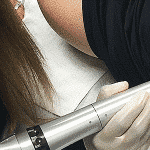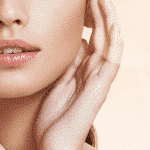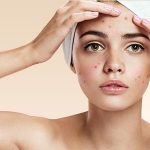It can be a very confusing sight to behold: older, balding men whose hair on their heads seems to have jumped ship and taken root on other odd places on their bodies. Their ears, noses, shoulders, and backs are sprouting new locks of hair that these men desperately want back on their heads. And this phenomenon is not exclusive to men; although the change is less drastic for women, they may still find themselves sporting a bad teenage moustache as they reach menopause. So why does this happen to us as we get older? There’s one main hormone responsible: testosterone.
Why it happens:
The hair that seems to appear suddenly as we get older has really been there all along, we just didn’t notice it. We have fine, downy hair called vellus that covers the majority of our skin. When there is an increase in testosterone in our bodies, like during puberty for example, this soft hair turns coarser, darker, and more noticeable. This is most obvious in men who start to grow facial hair as teenagers. As we age, our prolonged exposure to testosterone starts to play a visible role on other body hair as well. Just like it transforms the vellus hair on a young man’s face into a thick beard, it also changes the nearly invisible hair that grows in places like our ears into thicker strands.
Not only does testosterone change the texture of our hair as we get older, it also disrupts the natural cycle of hair growth. Hair naturally goes through three stages: growth, transition, and shedding. When we are young, the hair on our heads remains in the growth stage for a long period of time. However, the vellus hair that grows in places such as our arms enters the transition phase very quickly. This is the stage during which the hair follicle starts to collapse, but hasn’t died completely. When it dies and falls out, it is said to be in the last stage of the cycle: the shedding stage. When we are exposed to testosterone for a number of years, the hormone begins to affect the natural cycle of growth. It’s not that we start producing more testosterone as we age, but it is thought to have a cumulative effect on our bodies. The hair on our heads that normally stays in the growth stage for a number of years enters the shedding stage much more quickly. On the contrary, the hair in our eyebrows or ears that was easily kept at bay in our younger years remains in the growth stage for longer periods of time. So rather than continuing to grow luscious locks on our heads, we grow them out of our ears and on our backs.
The effects of testosterone described above are relevant to both men and women, but more so to men. So what about women and extra hair growth? Because they don’t produce as much testosterone as men, their transition into the world of hairier body parts is not as drastic, though it still occurs. Around the time of menopause when hormone changes are taking place, women will often develop more noticeable facial hair. This is because their bodies lose estrogen, but not testosterone. This imbalance provokes a shift in hair growth the same way it does for men; it causes more hair to grow on women’s chins and upper lips and often drives them to find a solution for their unwanted hair.
What you can do about it:
If you are a woman and begin to notice a few extra dark hairs on your face, you can safely use a razor or tweezers to remove them. However, it is not recommended that you shave your entire cheeks, chin, and upper lip because that will cause the soft hair to become thicker and even more noticeable. If it’s the fine, downy hair that you’re noticing, chances are, you are probably the only one noticing it. A good tip is to stand at arm’s length in front of the mirror and look at your face. If you can’t see any extra hair growth, you shouldn’t worry about it; most people won’t be examining your face from a magnifying-glass perspective. If, however, your few errant hairs are noticeable and you are tired of always plucking them out, laser hair removal may be worth looking into. It is especially effective on hair that is darker than your skin tone because it targets the pigment in the hair as it removes it. So although it may not be necessary to remove the nearly invisible hair growth you’re experiencing, laser hair removal can certainly help eradicate any thicker, darker hair that may have sprouted up during menopause.
For men, their concern is not that they are growing more facial hair, but that they are growing more hair out of their noses and ears and on their backs. For nose and ear hair, it’s best to trim them with scissors or specific trimmers made for that purpose. It’s not a good idea to pluck these hairs out because the inside of the nose and ear canal is extremely sensitive and the experience would be pretty uncomfortable. Trimming isn’t a permanent fix but at least it’s a painless one! If you’re a man and you’re looking for a more permanent solution to excessive hair growth, laser hair removal may be the right choice for you. If your new ear hair is very noticeable because it is growing on the outer parts of the ear, or if your back now has its own fur coat, laser hair removal is the most effective option to permanently reduce hair growth.
So if you’re concerned about the excess hair that you seem to be accumulating as the years pass, you’re not alone! Now that you have a better understanding of why it happens, you can find a solution that works best for you. Shaving, trimming, waxing, and laser hair removal are all options to consider if you find yourself admiring Bigfoot for his smooth skin. If you decide that you’d like to learn more about laser hair removal, contact us at Advanced Laser Clinic and we can meet with you for a free consultation to help you get back to your younger, smoother self!






